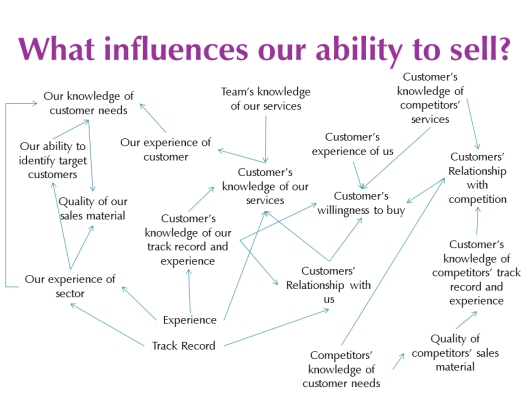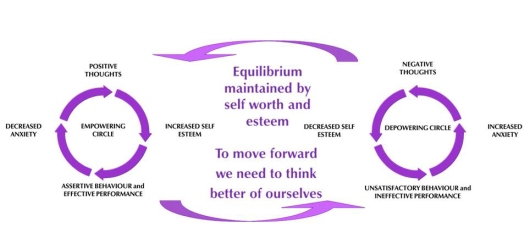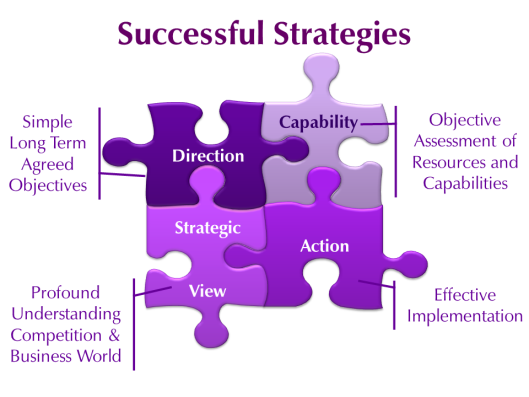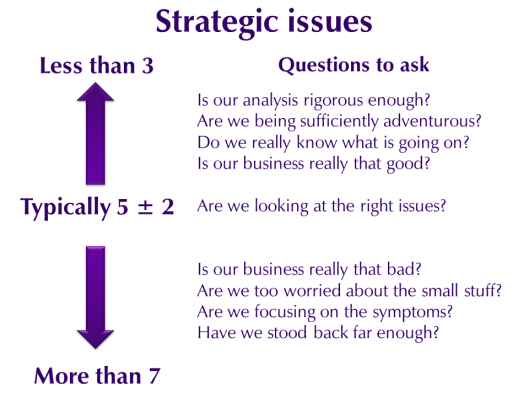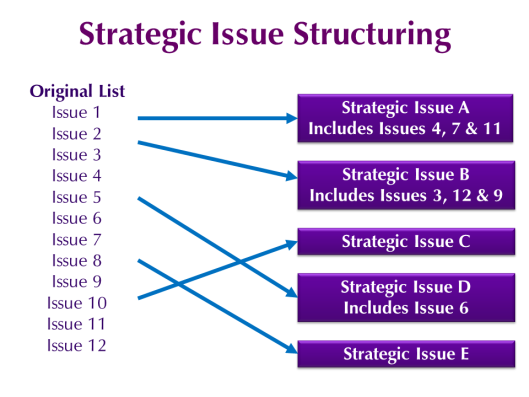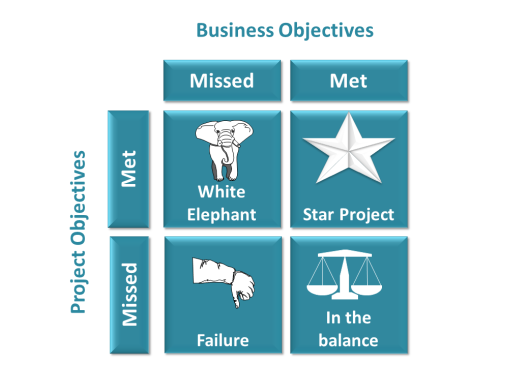This is a follow-up post to: Think about it – 8 ways to enhance your thinking
In some ways, creative thinking is the most critical of all of the thinking styles – if you don’t come up with something different from your competition, you’ll always be following in their footsteps. Creative thinking is about getting beyond the obvious, seeing possibilities and generating options for success. As we have said elsewhere – however good the idea, it will only bear fruit if it is implemented so you do need to be able to switch into different thinking modes. [See Turning good ideas into effective action]
Creative thinking is a bit like that too, it is about selecting the right thinking mode at the right stage in the process as we will see later.
The term “creative” has been much misused and applied very narrowly: we are all creative, creative thinking can be applied to any industry and we all know [or once knew how to do it]. If you have ever seen children turning a few simple items into [imaginary] space ships, houses or fortresses you will know what I mean. Somehow, it is educated out of us by the school and business systems [see Sir Ken Robinson’s TED talk if you need any further evidence]
Creativity has a structure and you can apply processes and techniques to make it easier for you to generate new ideas. it needs effort and it needs to be taken seriously, it may be your only real competitive advantage. Most people jump to the obvious conclusion without really examining the issue they are trying to address [see the catalogue of stupid ideas and inane suggestions developed by candidates on the Apprentice for instance!]
Creative Problem Solving Cycle
I like to think of the problem solving process as a cycle which leads to better and better ideas and a better and better understanding of the issues the more times you go round the loop. It is usually better to have several “quick and dirty” cycles at the beginning rather than doing a lot of analysis. This also builds momentum and gets people involved.
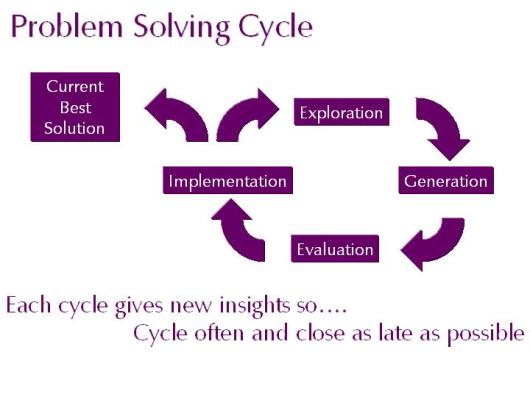
Creative Problem Solving Cycle
Exploration
To stand any chance of solving any problem [if it is indeed solvable] you need to understand it thoroughly. That’s why you start with an exploration stage.
It would be a complete waste of time to come up with a fantastic solution to the wrong problem.
This means understanding the nature of the problem, its context and the standpoints of everyone who is involved. [Incidentally, some people feel that it is better to think of challenges rather than problems. If that works for them fine – I prefer to think that it is just a mindset issue and you might as well call it a “George”. The approach works just as well whatever you call your problem / issue / challenge …]
Generation
The next stage is to come up with some ideas – there are lots of techniques for this with brainstorming probably being the best known. The important issue here is to build on each other’s suggestions – “Yes and …” rather than “Yes but …”. You need to come up with as many and varied ideas as possible – quantity breeds quality. It is crucial that there is no judgement of the ideas at this stage as a seemingly unworkable approach could spark a better, more workable idea from one of the other participants.
Evaluation
Having generated lots of ideas, you will need to organise, cluster and evaluate them to determine which are worthy of further development. Again, there are many techniques and approaches you can use. It can also be useful at this stage to return to the generation phase as the clustered, collated and reviewed ideas may well spark new thoughts.
Implementation
In early cycles, you are unlikely to actually put anything into action but it is a good idea to consider how you would put the ideas into practice. This will involve steps such as:
- Stakeholder analysis – who supports, who is against, what are their views, what are they looking for.
- Building a robust proposal – have you got the scope right, does it need extending or reducing, how will you market your ideas
- Implementation planning – how will you move forward to take effective action, what are the steps …
Each of these steps has the potential of generating improved insights about the issues being addressed and may encourage further cycles through the process.
Current best solution
It is important to recognise that for most real life problems, there will never be an ideal solution, so what you leave the process with is the current best solution but at some point you need to take action.
There are two important implications of this:
- you may not be entirely satisfied with the outcome and
- someone may come up with an even better suggestion at a later date.
As we will discuss later in the Project Thinking stream, the desired outcome is the best solution by the required date – so don’t beat yourself up about it.
Divergent and Convergent Thinking Styles
An underlying theme here is that both divergent and convergent thinking styles are appropriate at different points in the cycle. Few people are equally adept at each style and this should encourage you to get different people with different approaches, experiences and outlooks involved. Don’t worry if this leads to conflict and clashes, you need differences of opinion. The bigger risk is that everyone will think the same.
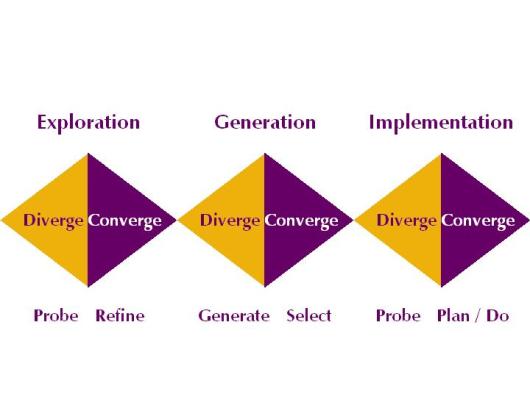
Appropriate thinking styles for each phase
Way forward
The creative thinking muscle needs exercise and the most important first step is to recognise when you are taking decisions without trying to find alternatives.
If you have only one option – you might as well be a robot: if you have two options, you have a dilemma: if you have more options, you have flexibility.
You need to find ways to get a more diverse group of people involved and it can be helpful to develop a toolkit of simple techniques to get you started – you can find more sophisticated approaches later if you need them.
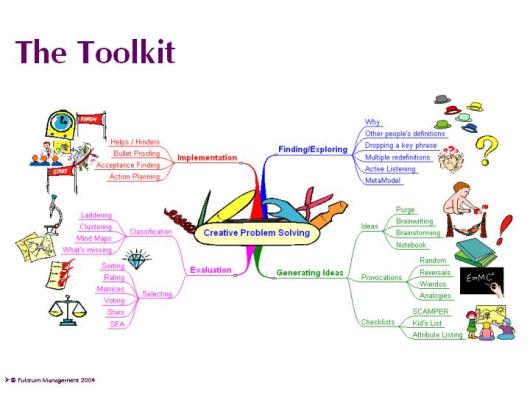
Creative Problem Solving Toolkit
If you would like a copy of my recommended basic toolkit and links to useful sources of information, please drop me an email at jim@fulcrum-management.co.uk

